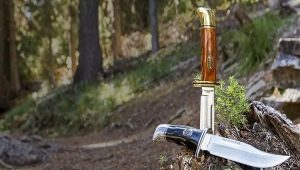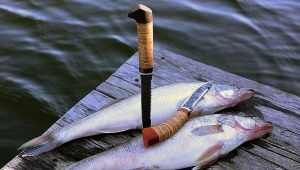Tourist knives: types and subtleties of choice
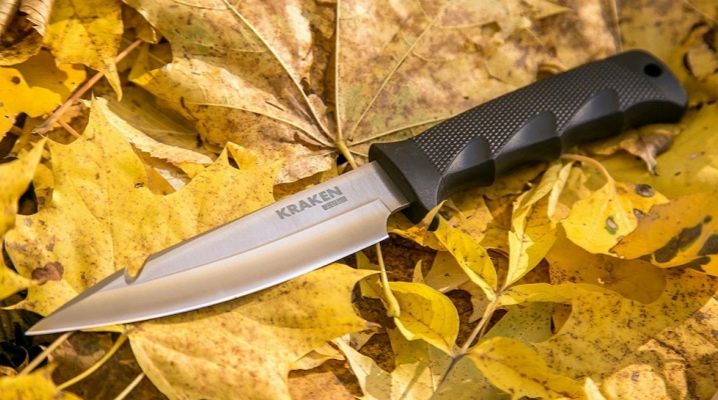
If you accidentally get lost in the woods, but, fortunately, even a small folding knife turned out to be in your pants pocket, this is good luck. It is worth having a good habit of always taking a good camping knife with you into the woods. Let's take a look at their varieties.
Why do you need a knife on a hike?
The hiking knife in its multi purpose is used on trails and campsites for comfort, safety and, of course, survival in extreme situations. Traditionally, a tourist knife is used:
- for food processing and preparation;
- when breeding and maintaining the flame of a fire, making various complex and simple racks and crossbars for the hearth;
- for cutting skewers, rods, stakes for installing awnings and other shelters, collecting dead wood for insulation;
- for the manufacture, if necessary, of medical supplies - splints, stretchers, crutches, etc.

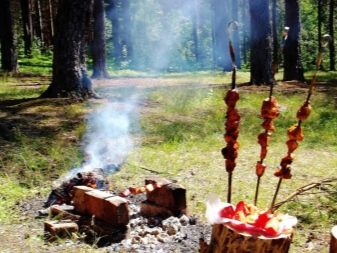
Taking into account the required functionality, there is no clear division of knives for tourism into “camping” and “non-camping”, or rather, it is conditional. Therefore, when purchasing a product, they usually proceed from general requirements, certain selection criteria, guided by their own skills and preferences. It is necessary to take a knife for tourism on a long trip thoughtfully, keeping in mind the purpose of the trip, its duration, route and the area through which it passes.
Do not overlook: the places to visit, the composition and age of the tourist group, the degree of health of its members, not excluding security issues and the possible occurrence of extreme situations.
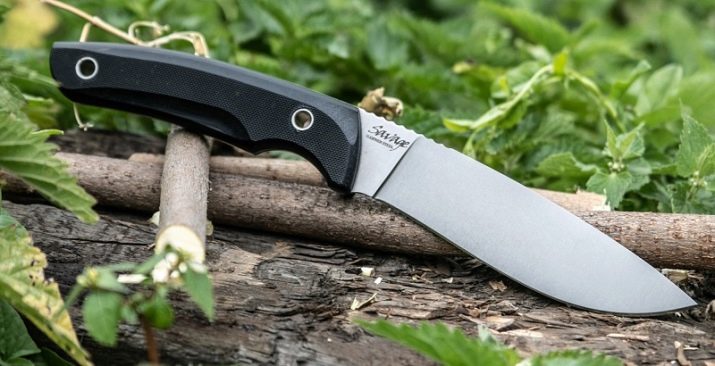
Varieties
Taking into account the wide range of tasks solved with the help of cutting tools, ideally, an experienced tourist should have three types of knives on a hike: main, auxiliary and tool.
- The main type of camping knife usually used to perform "power" operations - cutting branches, chopping firewood, etc. It should be solid, with a not very long blade (12-15 cm) and a comfortable handle. For gourmets, it is better to purchase such specimens from handmade masters. Sheaths are better with a bright color (less likely to be lost) or with a bright braided handle.
- Auxiliary - used for cutting food, cutting ropes and other small operations. Usually these are folding knives, selected based on their functionality and personal preferences in terms of aesthetics and comfort when working.
- Instrumental or multifunctional (multitool) with a corkscrew, a can opener and other tools in one case.
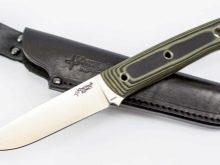
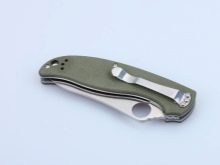
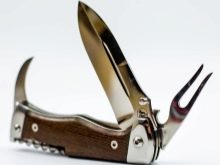
Construction types
Structurally, tourist knives are divided into 3 main types - folding, non-folding non-separable (fixed) and collapsible. The choice of a specific design is carried out on the basis of functional necessity and expediency. Folding tourist knives are usually inferior in strength to one-piece clumsy ones. They are more difficult to clean from dirt, food and wood. However, they are compact and lighter in weight.
Folding knife is convenient for outdoor recreation, any picnic rarely does without it, but it is not suitable for a long hike. But how an additional, universal cutting tool will suit you perfectly - open canned food, pierce a hole, open a bottle of water, etc.
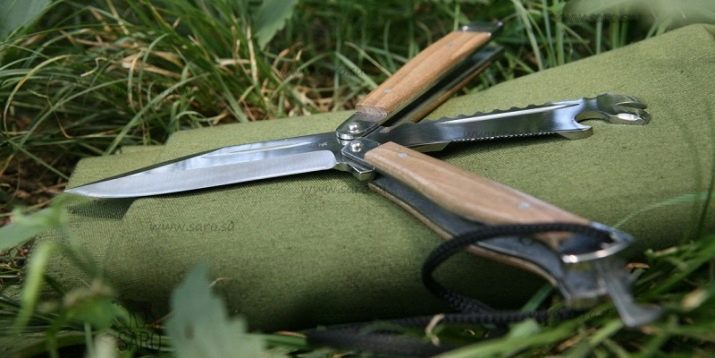
Clumsy non-separable knives are simple and reliable. For a long hike, they are the most acceptable option. They are made of high quality steel, with a strong and reliable handle. They are suitable for solving a variety of tasks - for cooking, processing branches and pegs when setting up a tent, etc. It’s good to have a cover for a fixed (preferably a belt, for convenience) and a sharpener.
Collapsible clumsy camping knives are made with removable blades, other structural elements, which is extremely convenient for long transitions, since spare blades are included in the kit. Removable parts of the product, as a rule, are light and do not take up much space.
When choosing a collapsible model, it is important to check the reliability of the fastening, which ensures the rigidity of the structure. A multifunctional and inexpensive multi-tool perfectly complements the main view on a long hike.
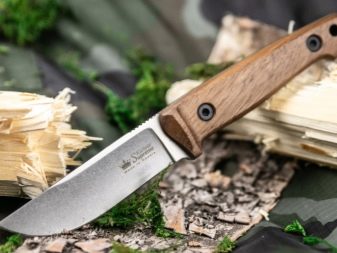

Blade
The blade of a tourist knife must be chosen from grades of not too hard steels - they are fragile and difficult to sharpen. Steels that are too soft will not be sharp enough. The most suitable option for a camping knife would be medium hard steel (for example, 58-60 HRC). It is practical and can be sharpened even with the use of auxiliary tools. The forms of blades produced by the production are diverse:
- Finns (concave types);
- spear-shaped;
- blades with a straight butt;
- blades with a reduced butt;
- blades with increased butt;
- by analogy with the samurai "tanto";
- in the shape of a goat's foot.
In the practice of tourism, blades of the first two types are popular. The thin end of the fin is quite suitable for digging, and with a high-quality, sharp sharpening of the end, the fixed one will also be appropriate in hunting. Spear-like shape and a lower butt line are often characteristic of penknives.
A thickened butt and a sharp end significantly expand their functionality. On a multi-day hiking trip through a wooded area, you can’t do without a finca with a good fixed blade.

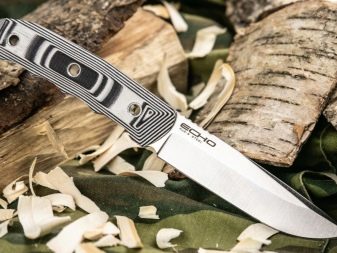
Handle
The handle is an important element of the product, which determines the convenience of its use. It should be conveniently located in the palm of your hand, matching it in size, not rubbing during long work. A great knife should feel like a natural addition to the hand. Personal preference is important when choosing a handle. For some, it is more pleasant to hold knives with carved, bone or wooden handles, while others, more rational and practical, choose options easier. Modern firms provide a wide variety of handle styles and materials to choose from - the choice is yours.
The rubber handle has excellent grip and sits snugly in the hand. Bone handles are beauty and aesthetics. Wooden ones are comfortable to hold in your hand, but they need special care. Plastic handles are more unpretentious, besides they are moisture resistant. Between the blade and the handle, a small ledge is needed to protect the hand from slipping onto the blade. Practical and the presence in the handle of a small hole for the lace.
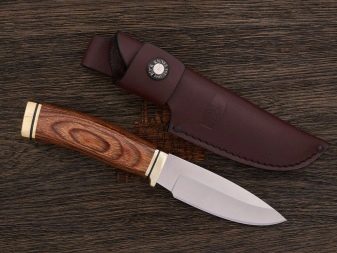
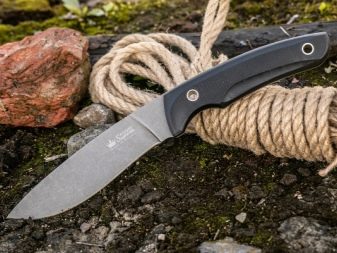
Top Brands
To a certain extent, conditionally, given the reviews of experienced tourists, you can rank the best brands on the market for camping knives.
- Knife KA-BAR USMC Utility (USA). Total length - 30 cm, with a leather handle and reliable protection. The edge of the blade is smooth, easy to sharpen.
- Tom Brown Tracker - a hunting knife, practical in campaigns. Length - 30 cm. Blade 11 cm, with a saw.
- Swedish products - SOG SEAL and A1 Swedish Survival.
The first - with a securely fixed blade, is especially durable. Sharpening does not require, does not rust. The blade does not bend even when using the knife as a lever. Blade - 18 cm, thickness - 5 mm. With notches on the surface of the blade. The second is an excellent knife for camping trips, with a total length of 28 cm. The blade is 16 cm, with a one-piece corrugated handle, hand protection and a neat hole for a cord.


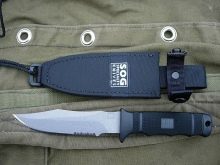
Of other foreign brands of quality products, we indicate:
- Benchmade Bushcrafter (survival knives);
- Buck Vanguard (strength and reliability);
- Gerber Blades Big Rock (quality budget options);
- Victorinox Swiss Champ (multifunctional knives);
- SPYDERCO Endura 4 (accuracy, accuracy and reliability).
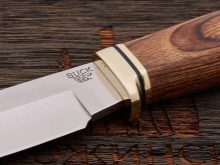
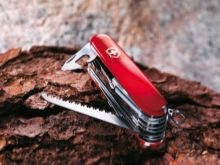
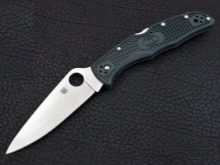
Tourist knives of Russian production are widely represented on the domestic market. Here you can highlight, for example, knives: "Katran" from the PP "Kizlyar", "Jack" from the brand "Southern Cross", Pavlovsky knives, models "Tourist 5", etc. Folding knives of the latest model are also good in manual version.
Excellent multifunctional cutting products, which are especially popular, are produced by the Swiss companies Laserman and Victorinox. Firms produce high-quality multi-tools, in terms of functionality from 2-3 functions to 40 or more - the choice is unusually wide. True, multi-tools with a lot of functions are expensive. The same multi-tools of the Chinese brand World Rider and domestic production are somewhat cheaper, which are not much inferior to foreign counterparts. A significant number of functions and low weight are their obvious advantage.
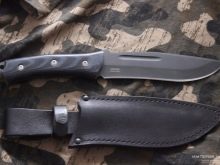
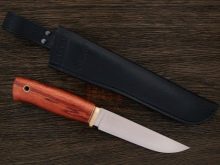
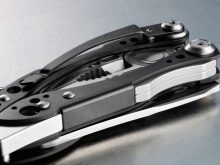
How to choose?
In terms of criteria for choosing a tourist knife, it is important to consider the following points:
- it must be functional, that is, correspond to the tasks that it will have to solve on the campaign;
- blade thickness of medium size;
- the shape of the blade is simple, and the handle is comfortable, which should not be hollow;
- the scabbard must be brightly colored.
The optimal type of tourist knife corresponds to:
- convenient size (1020 cm), small knives lose their versatility;
- practicality;
- efficiency in application;
- steel quality, strength and weight;
- constructive reliability and safety;
- convenient care.

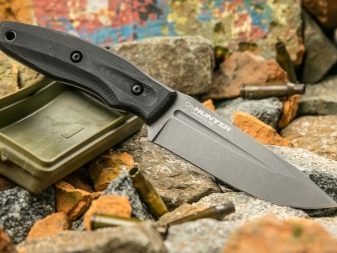
When choosing a cutting tool for hikes, especially long ones, it is important to take into account any detail. In this context, the question of choosing penknives or fixed knives becomes rhetorical, since in the end everything depends on the functionality of the product.
Although the fold has less weight and dimensions, it is limited in its functionality, since it is extremely inconvenient to perform “power” types of work with its help. For example, prepare wood chips for a fire.
Therefore, a knife with a fixed blade (fixed), firmly installed in the handle, is more practical and versatile. To this, the main type, you can buy a small and modest multi-tool with a certain number of functions. Not the last factor when choosing a product is the type of sharpening of the blade, which determines both the functionality and the effectiveness of its use.
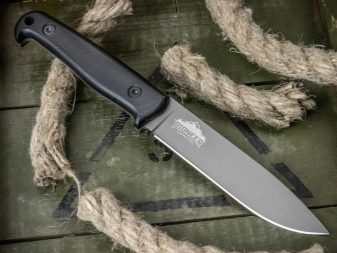

There are 6 types of sharpening.
- Smooth, with uniform narrowing of both sides of the blade.
- Sword-shaped, when the sharpening of the blade follows a little further than with a flat one. With this method, the knife remains sharp for a long time.
- Complicated, double. The edge of the blade remains thin, and then sharpening expands. This contributes to good cutting qualities and their long-term preservation.
- Concave - forms the sharpest cutting edge.The knife easily plunges into any objects. Requires frequent sharpening.
- Convex, when metal is additionally left on the cutting edge, and the knife becomes sharp and durable, retaining excellent cutting properties for a long time. Hatches and knives used in cutting are sharpened similarly.
- One-sided, like a "chisel", when one side of the blade surface is sharpened.

The condition of the cutting edge is relevant not only from the point of view of the functionality of the product. The edge with arched notches has excellent qualities. However, in the field this type of sharpening is practically impossible. For tourist knives, the first three types of sharpening are usually used.
The choice of a camping knife is exactly the case when it is beneficial to choose the “golden mean”. Moreover, such a choice is wide. Now you are fully armed and ready for a pleasant journey.
Do not forget to take with you, in addition to a tourist knife, a compass, a flask of water and a map of the area.
How to choose the right tourist knife, see the following video.























